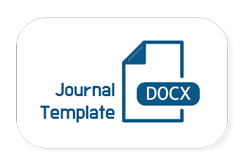Penggunaan BUKU dan Kepemilikan dalam Menganalisis Efisiensi Perbankan di Indonesia
DOI:
https://doi.org/10.21111/tijarah.v3i2.1587Keywords:
SFA, Efficiency, Csommercial BankAbstract
In December 2016, there are 116 commercial banks in Indonesia. Those banksare divided into few categories. Two of them are commercial banks based onbusiness activity (BUKU) and based on ownership. This research analyzes allcommercial banks that operates between 2012 and 2016 and divide them intotwo categories mention before. The aim of the research is to find out efficiencyscore using SFA method based on those two categories. The result showthat banks in BUKU 3 have the highest efficiency score, followed by BUKU 1,BUKU 4 and BUKU 2. Meanwhile, on ownership category, state owned enterprisebanks have the highest score. It then followed by foreign banks, private.banks, municipal banks and the last one mix ownership banksReferences
Berger, A. N., dan Mester, L. J. (1997). Inside the black box: What
explains differences in the efficiencies of financial institutions? Journal
of Banking and Finance, 21(7), 895–947. http://doi.org/10.1016/
S0378-4266(97)00010-1
Delis, M. D., Koutsomanoli-Filippaki, A., Staikouras, C., dan Gerogiannaki,
K. (2009). Evaluating Cost and Profit Efficiency: A Comparison of
Parametric and Nonparametric Methodologies. Applied Financial
Economies, 19(9), 191–202.
Dong, Y., Hamilton, R., dan Tippett, M. (2014). Cost efficiency of the
Chinese banking sector: A comparison of stochastic frontier analysis
and data envelopment analysis. Economic Modelling, 36(January),
–308. http://doi.org/10.1016/j.econmod.2013.09.042
Ferrier, G. D., dan Lovell, C. A. K. (1990). Measuring Cost Efficiency
in Banking: Economic and Linear Programming Evidence. Journal of
Econometrics, 46, 229–245.
Fiorentino, E., dan Karmann, A. (2006). The cost efficiency of German
banks : a comparison of SFA and DEA (Series 2: Banking and
Financial Studies No. 10).
Goldberg, L. (2013). The Efficiency of Danish Banks Before and During
The Crisis: A Comparison of DEA and SFA. Danmarks Nationalbank
Working Papers (Vol. 87).
Hartono, E. (2009). Analisis Efisiensi Biaya Industri Perbankan Indonesia
Dengan Stochastic Frontier Analysis (Studi Pada Perbankan yang
Terdaftar di Bursa Efek Indonesia Periode 2004 -2007).
Istuningsih, D. M. (2015). Analisis Perbandingan Nilai Efisiensi Bank di
Indonesia dengan Stochastic Frontier Analysis (SFA). Universitas
Diponegoro.
Muharam, H., dan Pusvitasari, R. (2007). Analisis Perbandingan Efisiensi
Bank Syariah di Indonesia Dengan Metode Data Envelopment
Analysis (periode Tahun 2005). Jurnal Ekonomi Dan Bisnis Islam,
II(3), 80–116.
Muliaman D. H., Santoso, W., Dhaniel, I. E. M. (2003). Analisis Efisiensiand
future. Journal of Banking and Finance, 17(2–3), 221–249. http://
doi.org/10.1016/0378-4266(93)90030-H
Industri Perbankan Indonesia: Penggunaan Metode Non Parametrik Data
Envelopment Analsysis. Jakarta.
Noviandry, F., dan Ghofar, A. (2017). Kepemilikan Asing, Mekanisme
Corporate Governance dan Efisiensi Teknis Industri Perbankan di
Indonesia. Jurnal Ilmiah Mahasiswa FEB Universitas Brawijaya, 4(2).
Paramita, D. P. R. (2008). Efisiensi Bank Perkreditan Rakyat (BPR) di
Indonesia: Pendekatan Stochastic Frontier Analysis (SFA) dan Data
Envelopment Analysis (DEA). Institut Pertanian Bogor.
Wahab, A., Hosen, N. M., dan Muhari, S. (2014). Komparasi Efisiensi
Teknis Bank Umum Konvensional (BUK) Dan Bank Umum Syariah
(BUS) Di Indonesia Dengan Metode Data Envelopment Analysis
(DEA). Al-Iqtishad: Vol. VI No. 2, 179–194.








